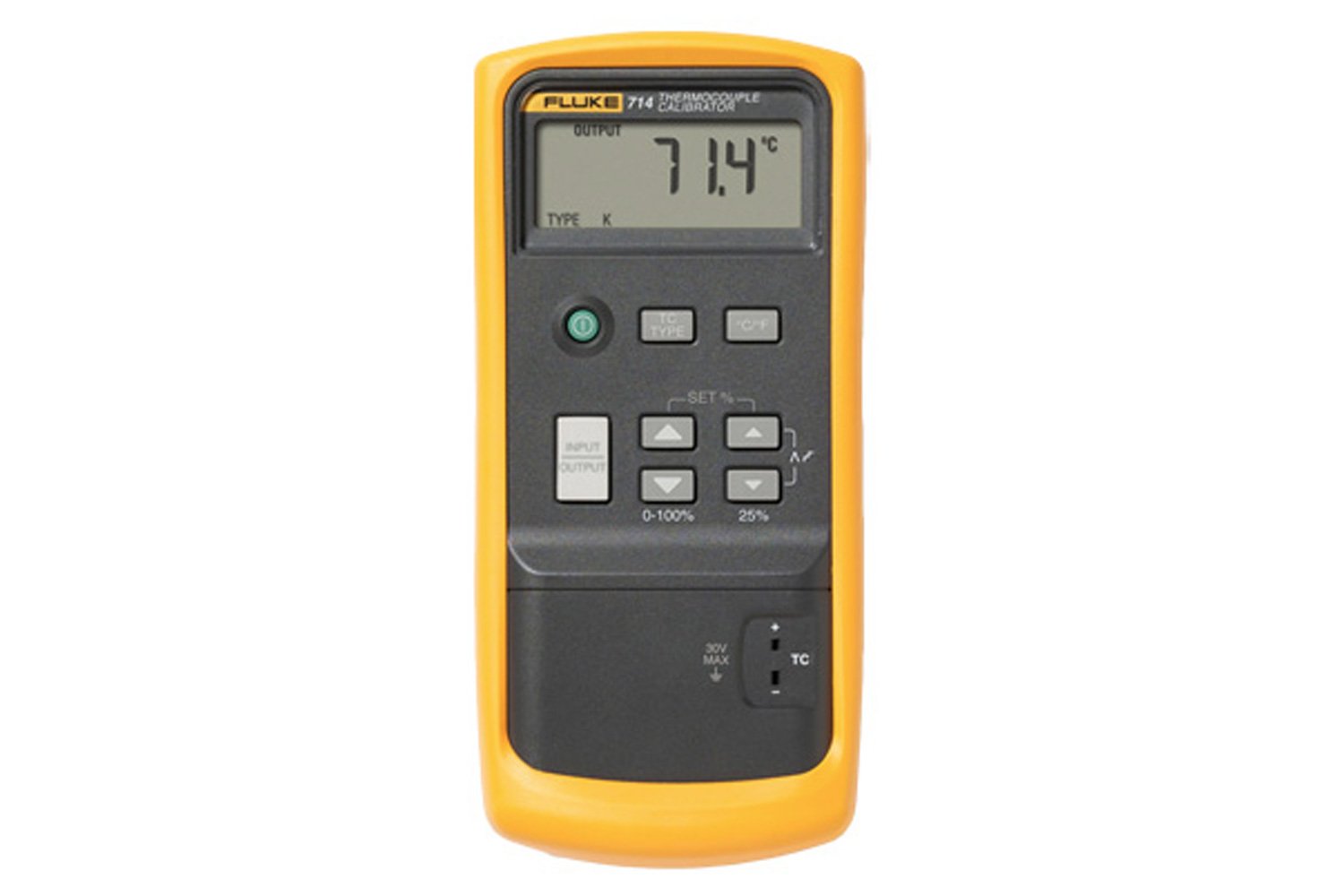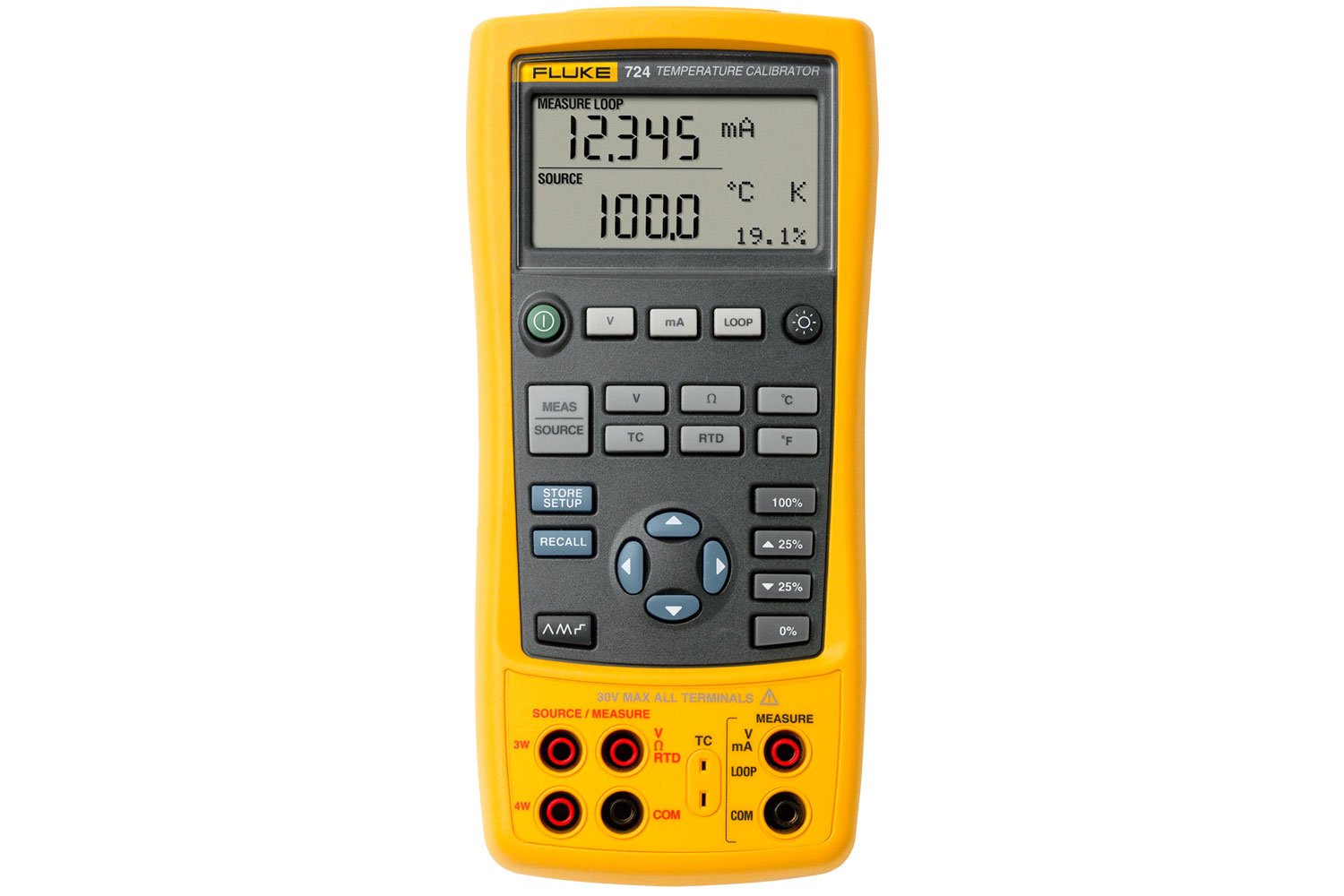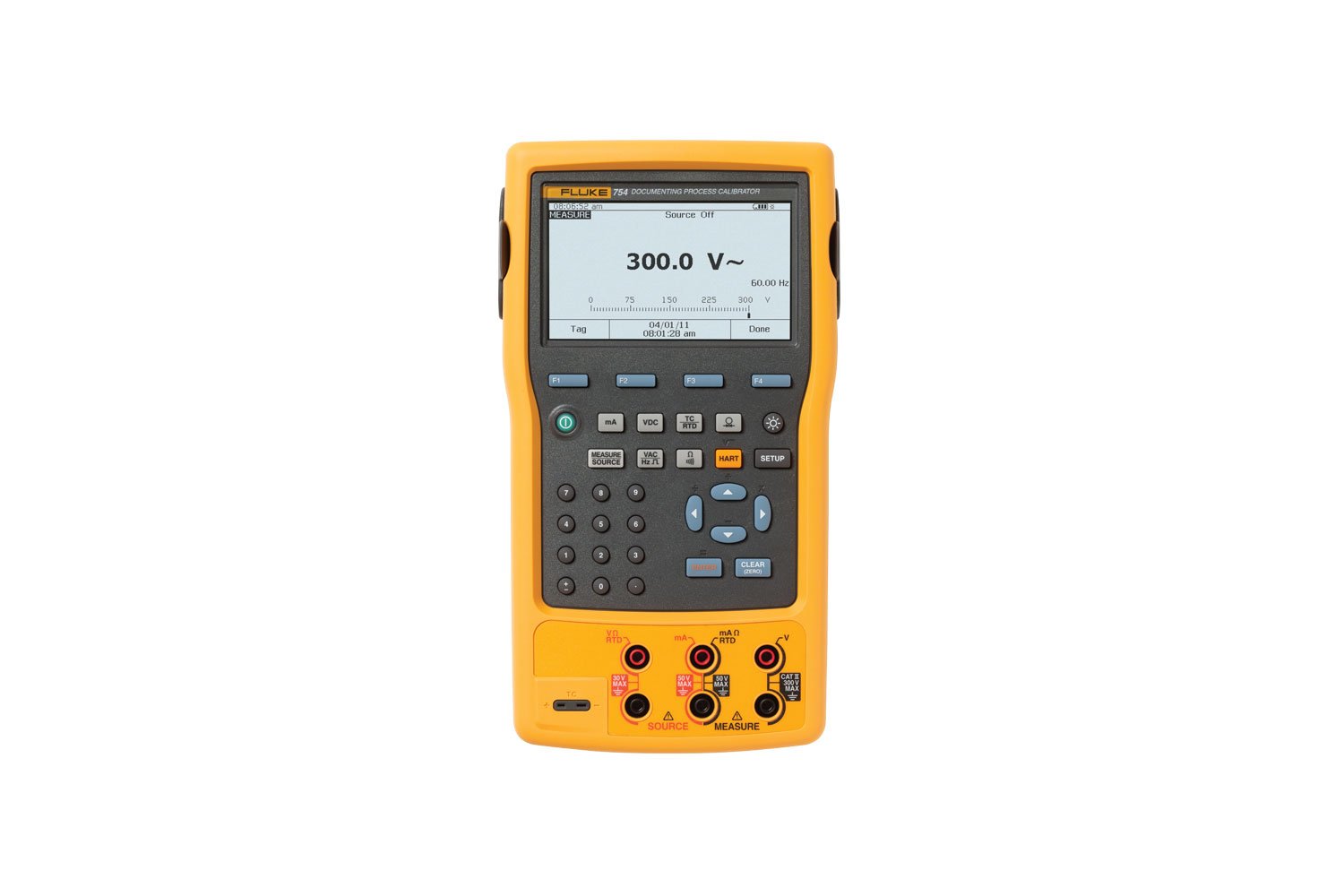Temperature and dry well calibrators

Fluke Temperature Calibrators simulate process sensors for testing temperature instrumentation. Specifically designed for the field, these lightweight compact tools are EMI tolerant, dust and splash resistant and offer an easy to use single push button interface. When paired with a temperature sensor they can take high accuracy temperature measurements to verify process temperatures and ensure the highest product quality and safety. There are a variety of different temperature calibrators designed for your unique calibration and testing requirements.
Fluke offers a wide range of temperature calibration equipment. Everything from simple Stik Thermometers to temperature simulation/measurement calibrators to dry-blocks, micro-baths and metrology wells. Whether you’re looking to calibrate a temperature transmitter in the field, test an RTD sensor, simulate a thermocouple, or calibrate a temperature transmitter at the bench, Fluke has a temperature calibrator for you.
Find the right pressure calibrator
Temperature calibration solutions
There is no one size fits all temperature test tool that meets the requirements of all users performing temperature instrument maintenance.
Our temperature calibration tools product selector can help you choose the right temperature calibrator for the task you need to perform. Use it now
Fluke 712B RTD Calibrators
For the temperature calibration professional that wants a highly accurate, easy-to-use, single...
Fluke 726 Precision Multifunction Calibrators
Calibrate thermocouples and RTD temperature instruments
Fluke 753 Documenting Process Calibrator
The 753 does the work of several tools – sourcing, simulating and measuring pressure, temperature,...
Fluke 725Ex Series Process Calibrator
Fluke 725Ex provides an intrinsically safe, simple and powerful multifunction calibration solution
Fluke Calibration 1523 Handheld Thermometer Readout
The 1523 Reference Thermometer from Fluke’s Hart Scientific Division measures, graphs, and records...
Fluke Calibration 9103/9140 Field Dry-Well
If you’ve been using dry-well calibrators for field work, you know there’s a lot more to a...
Fluke Calibration 9142 Field Metrology Well
The 9142 Series Field Metrology Wells extend high performance to the industrial process environment...
Fluke Calibration 9143 Field Metrology Well
The 9143 Series Field Metrology Wells extend high performance to the industrial process environment...
Fluke Calibration 9144 Metrology Well
The 9144 Series Field Metrology Wells extend high performance to the industrial process environment...
Fluke 9190A Ultra-Cool Field Metrology Well
The Fluke 9190A Ultra-Cool Field Metrology Well is the most accurate and stable, cold temperature...
Fluke Calibration 1524 Handheld Thermometer Readout
The 1524 Reference Thermometers from Fluke’s Hart Scientific Division measure, graph, and record...
Fluke Calibration 4180/4181 Precision IR Calibrators
Now it’s easy to increase your IR temperature measurement accuracy with the new 4180/4181 Hart...
Fluke Calibration 1620A Precision Thermo-Hygrometer
The DewK measures temperature to ±0.125 °C and humidity to ±1.5% on two channels, and displays it...
Fluke Calibration 9170 Field Metrology Well
Combining bath-level performance with dry-well functionality and legitimate reference thermometry,...
Fluke Calibration 9172 Field Metrology Well
9172 Metrology Wells. Now we’ve combined bath-level performance with dry-well functionality and...
Fluke Calibration 9173 Field Metrology Well
9173 Metrology Wells. Now we’ve combined bath-level performance with dry-well functionality and...
Fluke Calibration 9171 Field Metrology Well
9171 Metrology Wells. Now we’ve combined bath-level performance with dry-well functionality and...
Fluke Calibration 9009 Dual-Well Dry-Well
Dry-block thermometer calibrator featuring a hot block and cold block in a single package....
Fluke Calibration 9150 Thermocouple Furnace
9150 Thermocouple Furnace uses Hart’s own microprocessor-based controller for great stability and...
Fluke Calibration 9100S Handheld Dry-Well
Truly portable handheld dry-block temperature calibrators. They’re the smallest, lightest, and...
Fluke Calibration 9102S Handheld Dry-Well
Truly portable handheld dry-block temperature calibrators. They’re the smallest, lightest, and...
Fluke Calibration 6102/7102/7103 Micro-Bath
Hart Scientific manufactures these Micro-Baths for calibration of thermometers and sensors that do...
Fluke 9132/9133 Portable Infrared Calibrator
Our portable IR calibrators provide stable blackbody targets for calibrating noncontact IR...
Fluke Calibration 1502A/1504 Thermometer Readout
The 1502A and 1504 reference thermometers will read RTDs, PRDs, and thermistor sensors. Primary...
Fluke 1586A Super-DAQ Precision Temperature Scanner
The most accurate and flexible temperature data acquisition system on the market.
5606 Full Immersion PRT
The 5606 Full Immersion PRTs are designed to perform in extreme environments where both the...
9190A-X-P Ultra-Cool Field Metrology Well
The Fluke 9190A Ultra-Cool Field Metrology Well is the most accurate and stable, cold temperature...
Fluke 700PCK Pressure Calibration Kit
The Fluke 700PCK makes it possible to calibrate your pressure modules at your facility using your...
Fluke TL80A Basic Electronic Test Lead Kit
Test leads are an integral part of the complete measurement system and extend the capabilities of...
Frequently asked questions about temperature calibration
What is a temperature calibrator?
A temperature calibrator is a specialized tool designed to verify and adjust the accuracy of temperature-measuring devices like thermocouples, resistance temperature detectors (RTDs), and infrared thermometers. It creates a controlled temperature environment where these instruments can be tested and calibrated to ensure their readings are precise and reliable. Temperature calibrators are crucial in maintaining the accuracy of temperature measurements across various industries, including manufacturing, pharmaceuticals, and food processing.
What does a temperature calibrator do?
A temperature calibrator is a device used to test and adjust the accuracy of temperature measurement instruments. These calibrators generate precise temperature conditions that enable technicians to compare and adjust the readings of a device under test (DUT), ensuring their accuracy and reliability. This process helps maintain the integrity of temperature measurements in various industrial applications.
What instrument is used for temperature calibration?
Several instruments are used for temperature calibration, depending on the specific requirements of the calibration task. Commonly used instruments include:
- Temperature calibrators: These can be dry-block calibrators, liquid baths, or infrared calibrators that provide stable temperature sources for calibration.
- Reference thermometers: High-accuracy thermometers are used as a standard for comparison during calibration.
- Thermocouples and resistance temperature detectors (RTDs): Sensors are often calibrated to ensure their readings match the reference standard.
What are the different types of temperature calibrators?
Temperature calibrators come in various forms to suit different calibration needs:
- Dry-block calibrators: These devices provide a stable temperature environment by heating or cooling a metal block into which the sensor is inserted for calibration.
- Liquid bath calibrators: Using a liquid medium to create a uniform temperature environment, these calibrators are ideal for calibrating sensors that require immersion.
- Infrared calibrators: These calibrators provide a stable infrared radiation source and are designed for non-contact temperature measurement devices.
- Portable temperature calibrators: Compact and easy to carry, these calibrators are perfect for on-site calibration tasks, ensuring flexibility without compromising accuracy.
What equipment is used for temperature calibration?
The primary equipment used for temperature calibration includes:
- Dry-block calibrators: Generate stable temperatures in a metal block.
- Liquid bath calibrators: Use liquids like oil or water for immersion-based calibration.
- Infrared calibrators: Calibrate non-contact temperature measurement devices.
- Reference thermometers: High-precision thermometers used as calibration standards.
- Thermocouples and RTDs: Sensors that require regular calibration to ensure accurate readings.
- Portable temperature calibrators: These are versatile and mobile solutions for on-site calibration.
What is a thermocouple calibrator?
A thermocouple calibrator is an instrument used to verify and adjust the accuracy of thermocouples and thermocouple measurement systems. These devices are used in industries where precise temperature measurement is critical, such as manufacturing, pharmaceuticals, and energy production. A thermocouple calibrator ensures that temperature sensors and transmitters deliver reliable and accurate readings by providing accurate sourcing and measurement of various thermocouple types and millivolt.
Thermocouple calibrators like the Fluke 714B are designed for high accuracy and ease of use. The Fluke 714B is a handheld, battery-operated instrument capable of calibrating linear thermocouple transmitters with its millivolt (mV) source function and measuring milliamps (mA) while sourcing temperature. It offers features such as a linear ramp and 25% step auto ramp functionality for quick linearity checks, making it a versatile tool for calibration professionals.
What is a Dry Block Calibrator Used For?
A dry block calibrator ensures the accuracy of temperature measurement devices, such as sensors and thermometers. It provides a stable and uniform temperature environment, allowing for precise calibration. This tool is essential in industries like pharmaceuticals, food and beverage, manufacturing, and HVAC systems, where maintaining accurate temperature control is critical for quality, safety, and regulatory compliance.



































